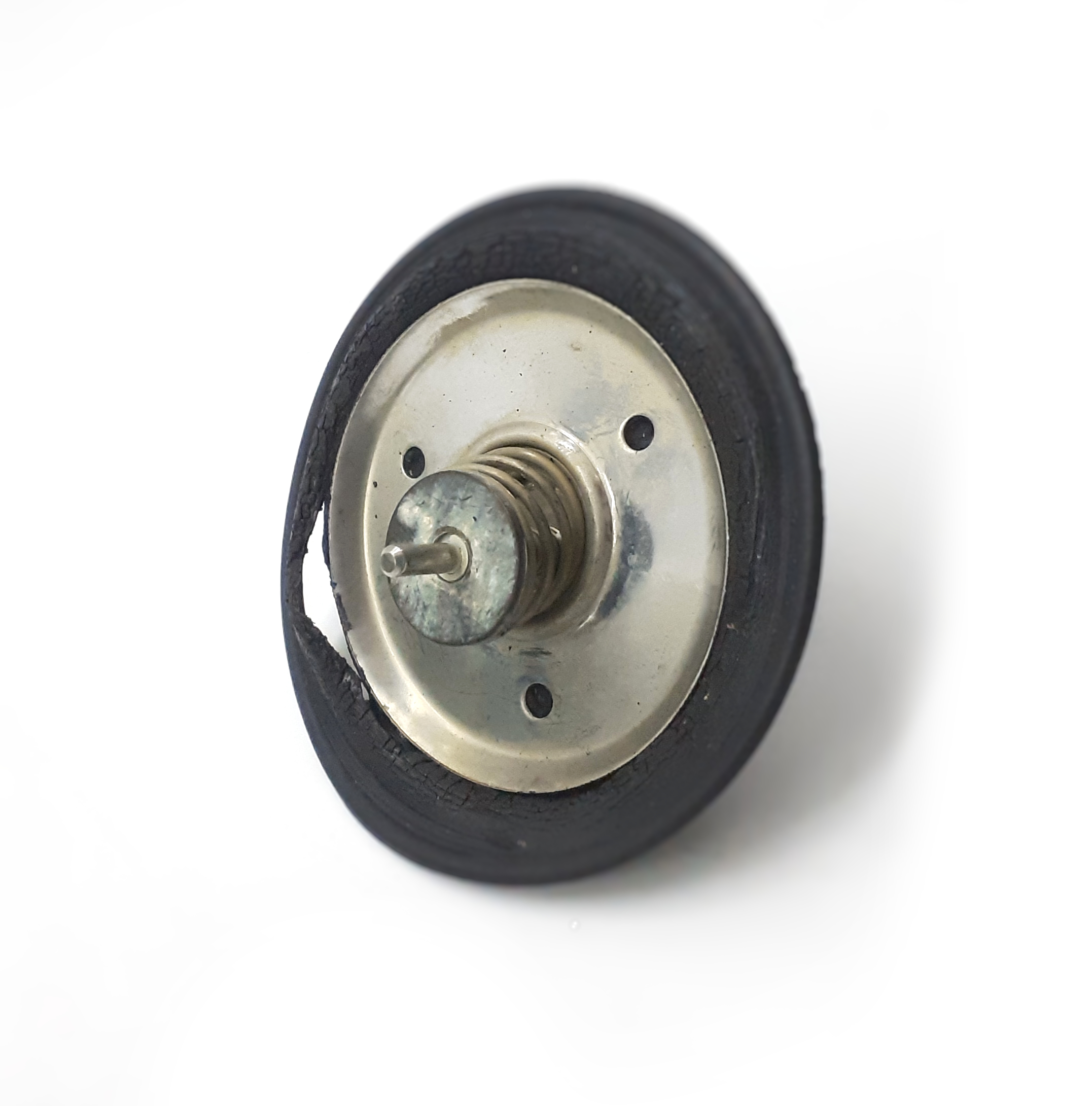The Morco FEB24 range of combination boiler uses a rubber diaphragm to activate the domestic hot water by diverting the primary water circuit to the plate heat exchanger. This provides hot water to the taps or shower. One side of the diaphragm is subject to indirect heat via the hot water in the primary circuit flowing through the hydraulic assembly. This design is common in combination boilers and other water heating appliances. The diaphragm is a rubber disc approx 60mm across and is viewed as a consumable item in much the same way as tyres on a car. The below photos show how a diaphragm should look (left) and how a damaged one may appear (right).

|
|
The diaphragm is exposed to high temperatures of between 60°C and 85°C depending on customer settings on the boiler controls. The diaphragm is also exposed to a range of chemicals added by the local water company to ensure the quality of the water supply. The concentration and variety of these chemicals varies by region and by district. The life of a diaphragm is therefore determined by:
- The temperature of the water as selected by the user
- The concentration and variety of chemicals in the mains water supply
- The amount of use the combination boiler receives
Due to the range of variables, it is not possible to accurately predict the life of a diaphragm in the same way as it is impossible predict the life of a car tyre.
If a diaphragm has failed the boiler will not switch easily between supplying water to the hot taps and providing central heating. In this instance it will need replacing. Many engineers will recommend replacing the entire hydraulic valve kit. This is not necessary as Morco supply the individual part and the unit will function perfectly once the diaphragm is replaced.
Download a copy of this help article


